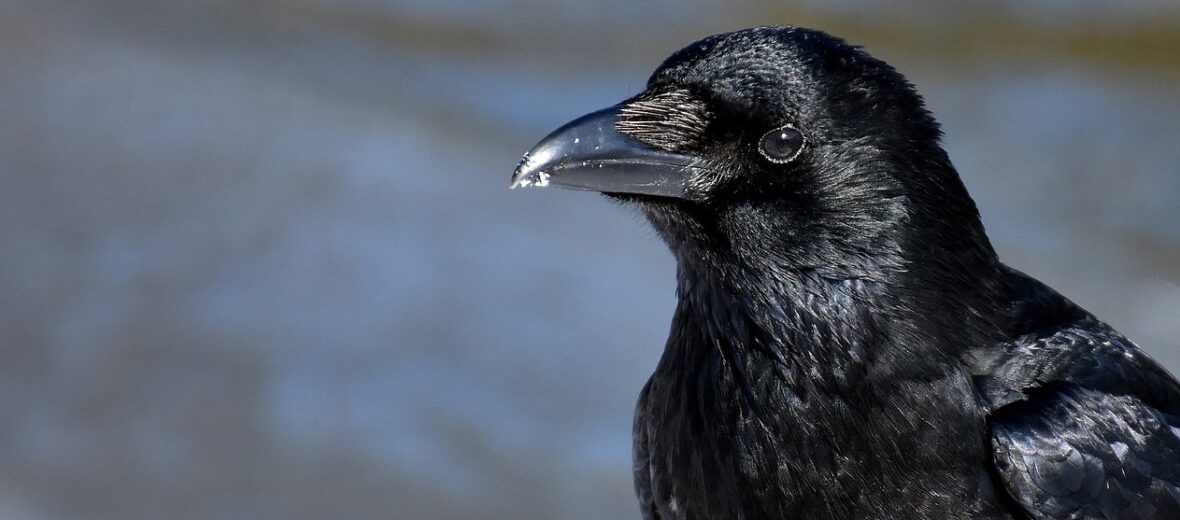
The raven has been depicted in myths and legends throughout the ages as mysterious, ominous, foreboding, and even a foreshadowing of death or ill will. In some areas of the world though, the raven is a sign of good fortune. The famous author Edgar Allan Poe even wrote about these fascinating birds as saying “nevermore”, foretelling of an omen of fate. These birds are clever mischief makers that deserve a better rap than they’ve gotten over the years. These birds are listed as Least Concern by the IUCN.
First the Stats…
Scientific name: Corvus corax
Weight: Up to 4.4 lbs.
Length: Up to 2.6 feet
Wingspan: Up to 5 feet
Lifespan: Up to 40 years
Now on to the Facts!
1.) One difference between ravens and crows is that ravens are much larger. Ravens also have longer, wedge-shaped middle tail feathers. A crow’s are more uniform.
2.) Ravens are very smart! They have been seen playing catch with sticks while in mid air, luring wolves to animal carcasses to break down the flesh for easier consumption, and even working in tandem to lure a bird away from it’s eggs so the other raven can feast on the temporarily abandoned eggs.
3.) A raven can sing and talk. These clever birds can imitate human speech, flushing toilets, car engines, and animal & other bird calls. It has been said that, for the most part, they can talk better than many parrots!
4.) They participate in a strange behavior called “anting”, wherein they roll in ant hills and let the ants swarm them. They then they allow the ants to crawl all over them and/or chew them up and then smear the guts all over their feathers. This behavior is not yet understood.
5.) These birds are scavengers eating everything from seeds, fish, fruit, meat, to carrion (dead animals), garbage, and even dung (poop).
But wait, there’s more on the raven!
6.) Adaptability is their strong suit. You can find them in mountain regions, deserts, forests, and cities.
7.) As an unfortunate name, a flock of ravens is called an “unkindness”.
Did you know…?
Ravens use hand gestures in a variety of situations, from seeking attention from other birds, to signalling that they have a need for something.
8.) When a raven loses a battle with another raven, they are usually consoled by their friend.
9.) Ravens are monogamous (mate for life).
10.) When a raven reaches their teenage years, they leave mom and join neighboring raven gangs to make mischief till adulthood.
Now a Short Raven Video!
Also, check out the Critter Science YouTube channel. Videos added frequently!
Want to suggest a critter for me to write about? Let me know here.



